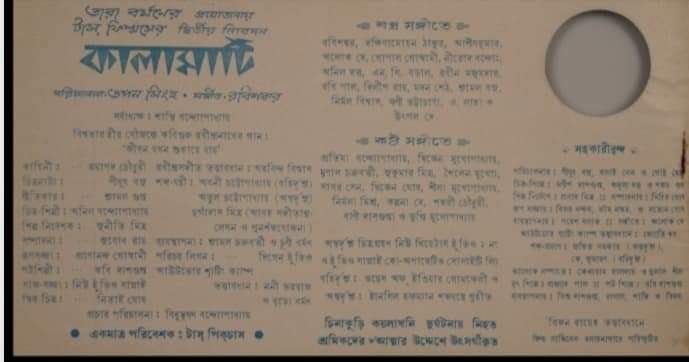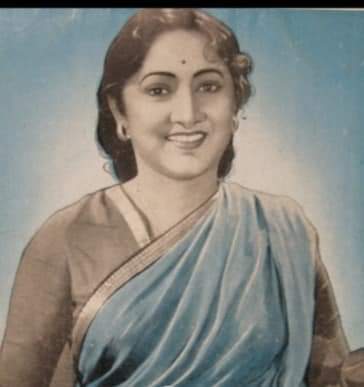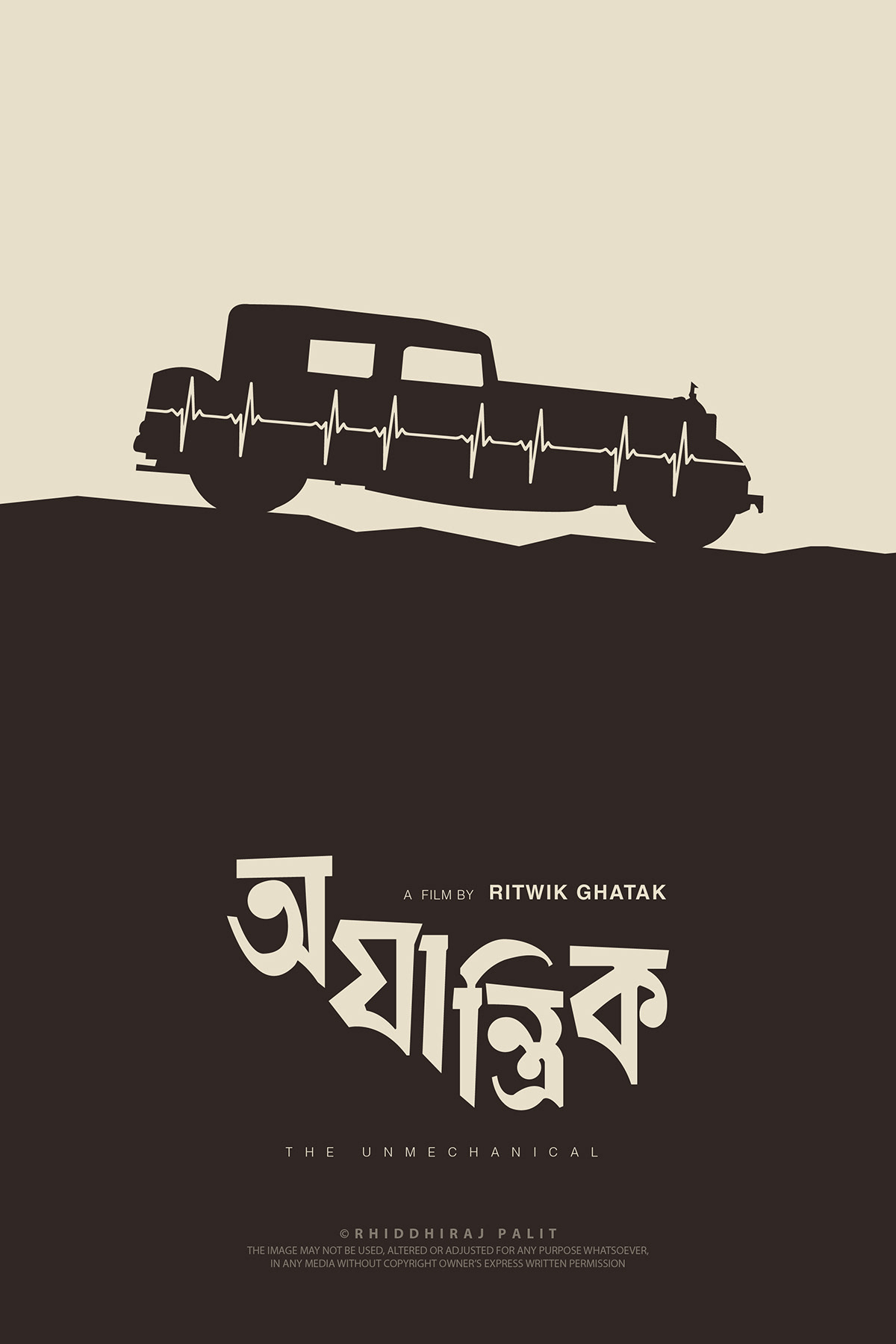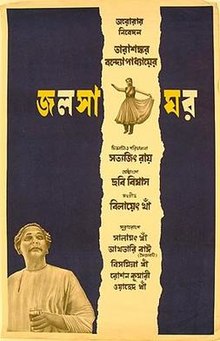











I recently watched Mrinal Sen’s BAISEY SHRAVAN (1960) on Youtube. Much to my pleasant surprise, I found that the film has not become dated with the passage of time. The film which unfolds a tragic romantic tale of a couple against the Bengal famine of 1943 can echo the plight of any poor family struggling to survive during the pandemic of 2020.



The film does bear the influence of “Pather Panchali” with its naturalistic village setting and came five years after that landmark film. Nonetheless ‘Baisey Shravan’ stands apart on its own strength and contains some of the most beautiful romantic sequences seen in Indian cinema. Seeing BS and the handling of romance in the relationship in the film, one does lament that MS never again made another romantic film quite like this one except probably his swan-song (Amar Bhuban)
Rating: 4.4 out of 5

(PC:http://canvas.pantone.com/gallery/37730005/Graphic-Movie-Posters)
AJANTRIK (1958, Bengali, d:- Ritwik Ghatak) After four serious films(Calcutta 71/Pather Panchali/Piravi/Paar), I was looking for a film with strong content using a somewhat humorous approach in the narration. Bhuvan Shome, Chorus, Khosla ka Ghosla and a few others came to mind. Finally I settled for AJANTRIK by Ritwik Ghatak. Based on a story by Subodh Ghosh, it’s a tale of affection of a Car mechanic cum driver Bimal (Kali Bannerjee) for his crumbling Chevrolet ( Jaggaddal ). The car was the source of livelihood for Bimal and his unusual attachment for the inanimate object is a reflection of gratitude for the vehicle that was his constant companion and bread winner for several years. The lens capture the rural landscape beautifully, and Ghatak showcases tribal dances much before Ray popularised it in his films. A couple of scenes seem exaggerated, but these are minor blemish in a novel, pioneering work. Brilliant acting by Kali Bannerjee
Rating: 4.4 out of 5

Ray had an eye for details, and an uncanny ability to pick the best and create memorable films. The brilliance of Tarashankar Bandopadhyay (writer), Subrata Mitra (cameraman) and Chabi Biswas (actor) and their association with Ray could only have resulted in a film like JALSAGAR – a film praised highly by the renowned photographer Hans Cartier Bresson for its exquisite imagery. The film touches upon decay of royalty and embedded pride about lineage refusing to come to terms with changing circumstances. Chabi Biswas carries the entire film on his shoulders with great elan. The supporting cast includes Padda Devi as the wife and a few others.
Quite a few long shots, like that of the feudal mansion captured at dusk, have a lingering effect. The scene where Chabi Biswas re-opens his closed Jalsagar towards the end and sees himself (after a long time) in the dusty mirror gaping at his own mirror image in disbelief is brilliant. The psychological probity of the Zamindari system has given us two more works from Ray – DEVI and MONIHARA.
Writing in the book “Portrait of a Director – Satyajit Ray” (Dennis Dobson, London), the author Marie Seton says “Jalsagar represented the 1920s with a central conflict not dissimilar to that in John Galsworthy’s play THE SKIN GAME. Ray commenced work on this film in 1957 shortly after completing APARAJITO.” Seton also writes “In the original story, the kathak dancer was the mistress of Biswambhar Roy (the character played by Chabi Biswas). Ray eliminated this aspect of the Zamidar’s life. Some people attributed this to prudery on Ray’s part. I left it out because it was melodramatic. Its elimination makes the film more austere, was Satyajit Ray’s explanation, which seem a valid one.”
Marie Seton further comments “In the context of Indian cinema, including the previous styles developed in Bengal, the most uncompromising aspect of JALSAGAR was Ray’s use of the strictly classical music of the noted sitar player, Ustad Vilayat Khan, in place of the more fluid musical approach of Ravi Shankar who had collaborated on the music for the Apu Trilogy.”
JALSAGAR remains one of the finest works of Ray…
Rating: 4.4 out of 5

In some respects PARESH by Sarat Chandra Chattopadhyay bears a resemblance to his story NISHKRITI. In both these stories, the elder brother a good Samaritan looks after the family business. Enters the second/middle brother — a greedy fellow wanting a division of the family property and cornering the lion’s share of it.
The titular protagonist Paresh (played by Nirmal Kumar) has grown up in the village under the tutelage of his uncle (elder brother of his father played by Pahari Sanyal). It is apparent that Paresh respects his uncle even more than his parents who try their best to steal their son from someone he really adores. The patriarch (Pahari Sanyal) has more faith in his nephew Paresh than on his own son Bimal (played by Premansu Bose). Bimal is greedy and falls into bad company. This has a ruinous effect on the family.
Misunderstanding surfaces in the relation between Paresh with his jhetu (Pahari Sanyal). To know the full story, watch this immensely moving film with brilliant performances by Pahari Sanyal and Nirmal Kumar and ably supported by Manju Dey, Molina Devi, Sova Sen, Tulsi Chakraborty, Sabitri Chatterjee, Kamal Mitra and others.
The film was directed by Ajay Kar with music by Anupam Ghatak.
Rating: 4 out of 5

Directed by Tapan Sinha, the film deals with the struggles and hardship of the poor in this ruthless world. It boasts of an impressive star cast that includes Uttam Kumar, Manju Dey, Nirmal Kumar, Sabitri Chatterjee, Kanu Bandopadhyay, Jahar Roy, Tulsi Chakraborty, Shyam Laha, Chabi Biswas and others.
A professor (Uttam Kumar) and his wife (Manju Dey) comes to live as tenants in the house of one Kanhali-babu (Kanu Bandopadhyay). They develop a soft corner for Krishna, the daughter of the landlord (Sabitri Chaterjee). Kanhali-babu eked out a livelihood from the rent that his house fetched. He was a strict father, and his daughter had no independence of her own.
Krishna used to pass on the nutritious portion of her diet surreptitiously to her father and subsisted on the remnants. The professor’s wife discovers it and replenishes her diet sparing something for her from their meal. Kanhali-babu’s nagging trait infuriates Bhola (Johar Roy), the Professor’s servant.
Krishna is in love with a certain gentleman (Nirmal Kumar) but her father has arranged her marriage to a retarded man in lieu of a paltry sum of money. After a lot of melodrama, Krishna unites with her paramour (Nirmal Kumar).
The film doesn’t rise to any great heights, but nonetheless remain watchable. Towards the end Krishna suddenly discovers that beneath the stern exterior, Kanhali-babu was a very caring father and had stashed away huge wealth in order to marry off his daughter in grand style. Why then did Kanhali-babu tried to marry off Krishna by accepting a paltry amount from the bridegroom’s family. Director sir, can you explain? ….
23.11.02
Not too many films of yesteryears have survived the ravages of time. Thus, it was heartening to see that the print quality of this 54 year old Bengali film , an award winner @ Berlin Film Festival in 1962 in a good condition.
Watching the film one felt how the natural school of acting thrived in those days in the films of filmmakers like Tapan Sinha. It is a delight to watch actors like Chabi Biswas, Radhamohan Bhattacharyya, Manju Dey, Jahar Roy and others bring their respective roles alive with such finesse.

Around late 50s-early 60s Bengali filmmakers like Mrinal Sen and Tapan Sinha made a foreigner in Kolkata as the protagonist of their films. Kali Bannerjee played a Chinese hawker in Sen’s NEEL AKASER NEECHEY & Sinha’s KABULIWALLAH showcased Chabi Biswas as an Afghani Pathan. Both the films play around with suspicions arising in the minds of people when a bonding develops between the foreigner with a local (the wife in NEEL AKASER NEECHEY & the little girl in KABULIWALLAH). Did the two writers, Mahadevi Verma (Neel Akaser Neechey) & Tagore (Kabuliwallah) ever found any similarities in their works? In both the films the ending finds the protagonist returning to his home country.
The child actor is superlative. Jeben Bose & Nripati Chaterjee act in supporting roles. The director uses a couple of Rabindrasangeet in the film. KHORO BAYU BOY BEGE is one of them. The music of the film was scored by sitar maestro Pandit Ravi Shankar.
For most of us engrossed in our daily drudgery of potholes to work and late night outs on weekends, Afghanistan may be another land where a war-like situation prevails. But not long ago, the Pathan was a household name immortalized by Rabindranath Tagore’s Kabuliwala, which can move even the hard-hearted to tears to this day. It also picturizes the harsh land that Afghanistan was then, and it is apparent that nothing much has changed.
Rating: 3.8 out of 5
Paras Pathar (The Philosopher’s stone, Bengali, 1958)
Posted: April 23, 2023 in Bangla 1950-60, Bengali films, De Sica, Humour, Rabindranath Tagore, Satyajit Ray, social commentary, Two Hundred Bengali CinemaThe hallmark of a great director is his ability to capture societal trends and imbue his works with his personal thoughts. That Indians are crazy for jewelry especially gold is known to all. At least in two of his films viz., ‘Paras Pathar’ & ‘Monihara’, Satyajit Ray uses this obsession as a leitmotif and used it to tell a story rich in societal commentary, the first one aided by a ‘fantasy’ narrative and the latter using the “horror” route based on a story by Rabindranath Tagore.
A number of remarkable films have been made in Bengal using the elements of ‘fantasy.’ One can recall Mrinal Sen’s ‘Ichchapuran’ based on a Tagore story, Anik Dutta’s ‘Aschorjo Prodip’ & ‘Asiete Asiona’ among others. These films clubbed with ‘Paras Pathar’ and ‘Thana Theke Aschei’ have pushed the envelope for Bengali cinema in their depiction of the unreal becoming the central device to communicate a social message/commentary.
‘Paras Pathar’ (1958) was the third film made by Ray after two serious films in his career – ‘Pather Panchali’ & ‘Aparajito.’ It’s a film unlike any that Ray has directed ever before or since. Billed as a comedy, it’s Chaplinesque in its treatment of pathos. It also brilliantly captures the aspirations lurking beneath the mundane existence of the middle-class office going Bengali and also issues a pearl of cautionary wisdom along the lines of the Gandhian philosophy of wealth accruing out of a lack of labor having disastrous consequences. Tulsi Chakraborty, the main protagonist is brilliant in a role of a lifetime.
Some of the initial sequences of the film exquisitely capture the milieu of the 50s and its life in the ‘office para.’ (business area) Watch the sequence where Tulsi C reveals the formula to the greedy jeweler out to make money and observe how humor can be cerebral and needn’t always be loud or conveyed using funny mannerisms.
The influence of De Sica’s ‘Bicycle Thieves’ on Ray and on the making of his debut film ‘Pather Panchali’ is well-documented. There’s also a likelihood that De Sica’s fantasy-laden ‘Miracle in Milan’ (1951) could have inspired Ray to make his film ‘Paras Pathar’. ‘Paras Pathar’ was based on a story by the scientist Rajsekhar Basu who wrote under the pseudonym Parashuram.
Rating: 4 out of 5